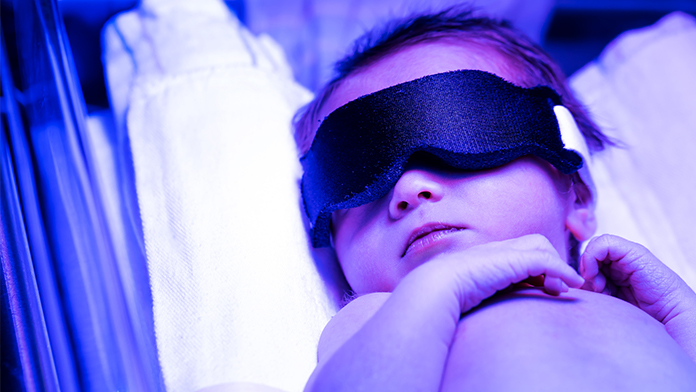The Crigler-Najjar syndrome (CNS) is a disease in which an enzyme (glucuronyl transferase) is not produced which allows the transformation of bilirubin into a product that can be eliminated in faeces and urine. It follows the appearance of jaundice, i.e. yellow coloring of the skin, due to the accumulation of bilirubin in the blood and tissues. Bilirubin becomes toxic to the central nervous system if it exceeds certain concentrations in the blood, resulting in brain damage and the onset of cerebral palsy, convulsions, deterioration of motility, deafness and even death.
There are two types of CNS:
- type 1 with total enzyme defect (severe form)
- type 2 with partial defect (less severe, with lower bilirubin levels).
It is a disease extremely rare (one case every one to two million people). Flavio Ronchispecialist in pediatrician, scientific director of CIAMI APS (Italian Association of people affected by Crigler-Najjar syndrome), explains better what it is.
Cause
It is a hereditary disease, genetically determined, transmitted by two parents both healthy carriers of the genetic defect concerning the UGT1A1 gene present in liver cells.
Symptoms of Crigler-Najjar syndrome
Symptoms of Crigler-Najjar syndrome are:
- Jaundice: appears in the first days of life and does not regress spontaneously. The increase in bilirubin in the newborn can be very rapid and reach toxic values for the brain in a few days, with the appearance of kernicterus, i.e. neurological damage in the newborn resulting in cerebral palsy. This event was often lethal, until in the early 60s it was discovered that phototherapy was able to promote the disposal of bilirubin through the skin. It is a visible symptom due to the yellowish color of the skin and the whites of the eyes
- Physical and mental tiredness
- Easy exhaustion to physical effort.
Diagnosis
It is based on dosage of bilirubin and on the exclusion of other causes of jaundice in the newborn. The final confirmation is with the genetic testing which identifies the gene mutation, which can now be performed in many molecular genetics laboratories. This test is useful for prenatal diagnosis in families with members affected by the syndrome.
Cures for Crigler-Najjar syndrome
The phototherapy involves the use of lamps that emit a specific light radiation between 430 and 460 lambdas. It is usually done at night, for eight to ten hours a day. This entails obvious restrictions in the daily life of patients and their families, and for these reasons we have tried over time to find alternative therapies to phototherapy.
Il liver transplantationthe organ in which the enzymatic defect is unique, is effective, but involves immunosuppressive therapy for the rest of life and surgical risks, in addition to the scarcity of available donations.
Gene therapy
An experimental gene therapy trial is underway aimed at replace the diseased gene with a healthy genewhich is inserted into the liver using a viral vector (AAV8 adenovirus) as a transport vehicle through a simple venous infusion.
Experimentation is underway in several European countries, thanks to the establishment of a project (CURE CN) financed with European funds, the arrival point after many years of scientific collaboration between research groups. Four patients have been treated in Italy so far in two different clinical centers with results confirming the efficacy and safety of gene therapy. In any case, years of observation are still needed to evaluate the persistence of this efficacy over time.
